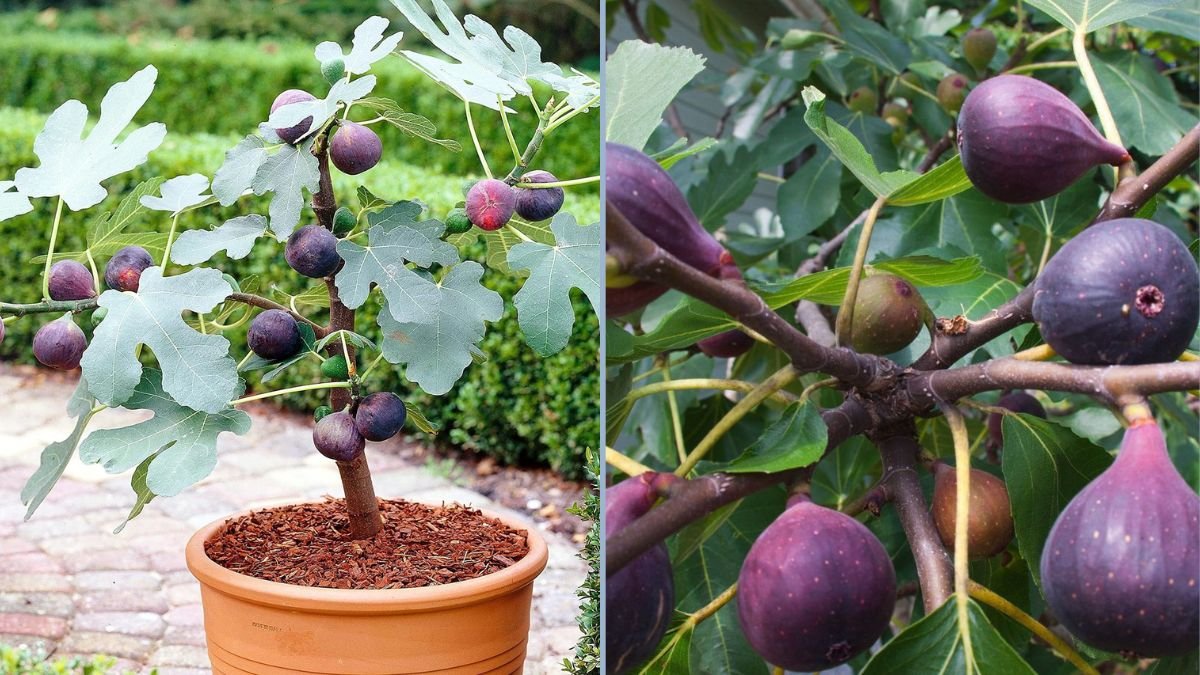Growing your own fruit in a backyard orchard is a deeply satisfying experience, and few trees are as rewarding as the Brown Turkey fig tree. Known for its reliable fruit production, adaptability, and sweet, flavorful figs, the Brown Turkey is a staple for gardeners seeking a low-maintenance, productive fruit tree.
In this guide, we’ll explore everything you need to know about planting, caring for, and harvesting Brown Turkey figs, whether you have a large yard or a container garden. From site selection and soil preparation to pruning, pest management, and enjoying your first harvest, this post will help you cultivate a thriving fig tree in your own backyard.
Why Choose a Brown Turkey Fig Tree?
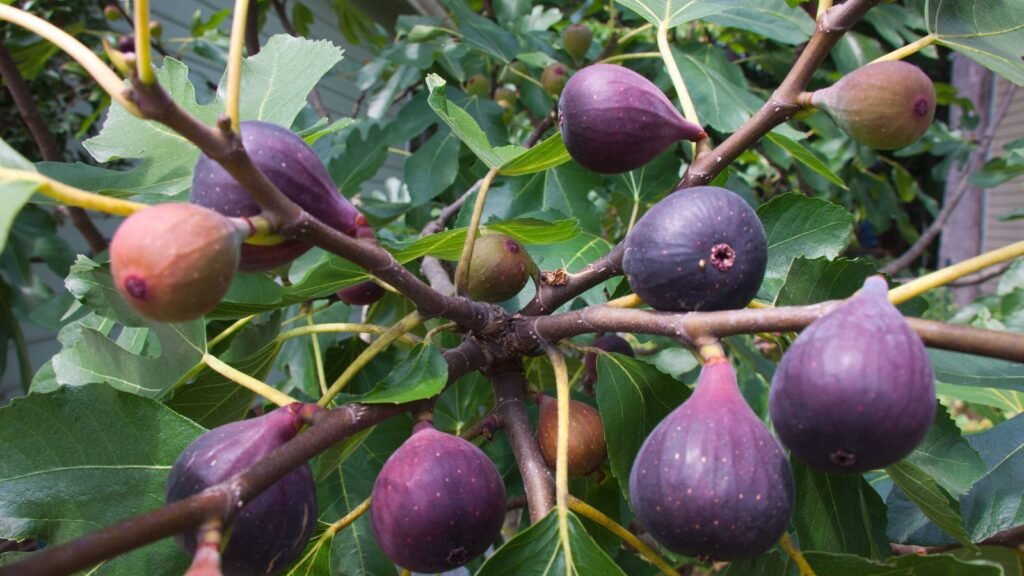
Brown Turkey figs are one of the most popular varieties for home gardeners for several reasons:
- Sweet, Rich Flavor: The dark brownish-purple skin hides a soft, sweet, pinkish-red interior, perfect for fresh eating and cooking.
- Cold Tolerance: More resilient than many fig varieties, capable of surviving mild frost in some regions.
- High Yield: Produces abundant fruit, often two crops per year in warmer climates.
- Low Maintenance: Adaptable to a variety of soil types and conditions, requiring minimal care.
- Compact Growth: Ideal for backyard orchards, espalier training, or container planting.
With these traits, the Brown Turkey fig tree is perfect for home orchards, combining ornamental beauty with delicious fruit production.
Understanding the Brown Turkey Fig Tree
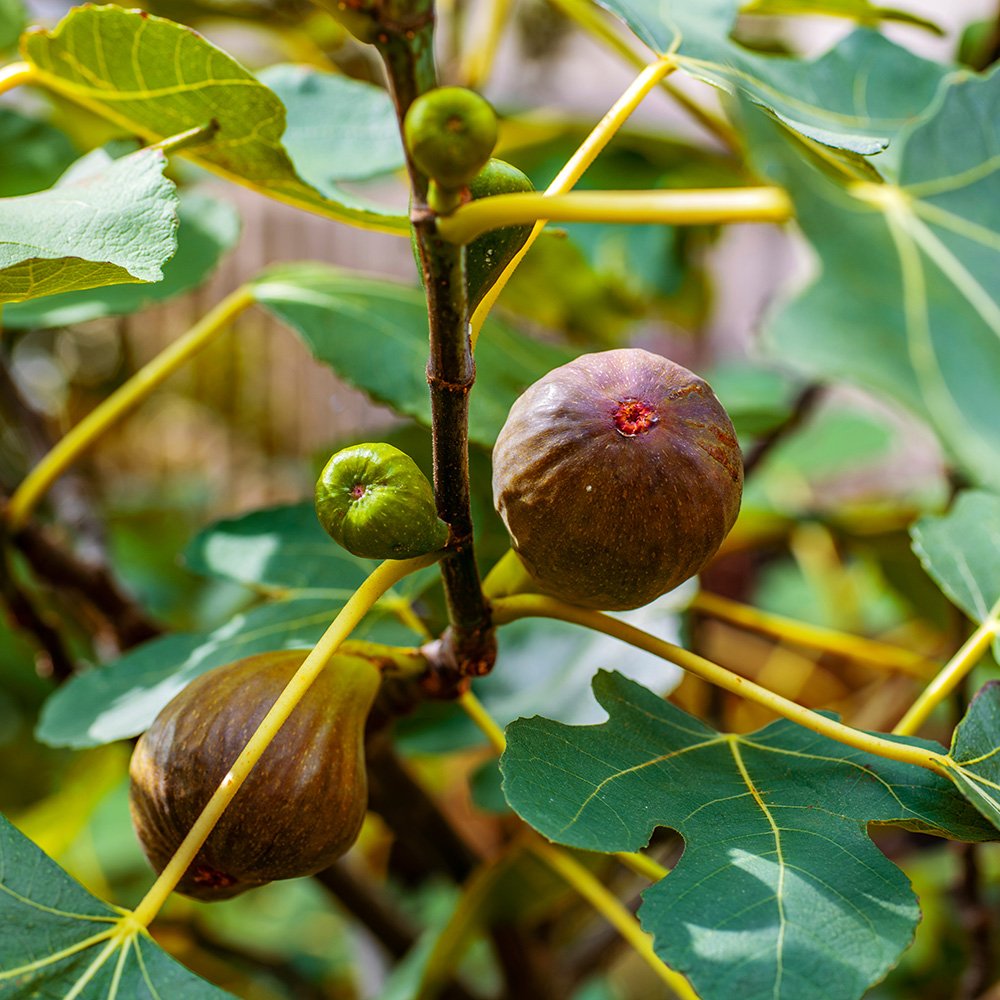
The Brown Turkey fig tree (Ficus carica ‘Brown Turkey’) is a deciduous tree that thrives in sunny, warm climates, though it can adapt to containers for colder regions. It is well-suited for USDA zones 6–10, and with proper winter protection, can survive even cooler climates.
Key Characteristics:
- Leaves: Large, deeply lobed, and bright green, providing dense shade.
- Fruit: Medium to large figs with dark brown skin and soft, sweet pink flesh.
- Growth Habit: Spreading, bushy tree that can reach 10–15 feet in height and width.
- Fruiting: Produces a breba crop on last year’s wood and a main crop on current season growth.
Understanding these traits helps you plan for care, pruning, and harvesting schedules.
Planting Your Brown Turkey Fig Tree
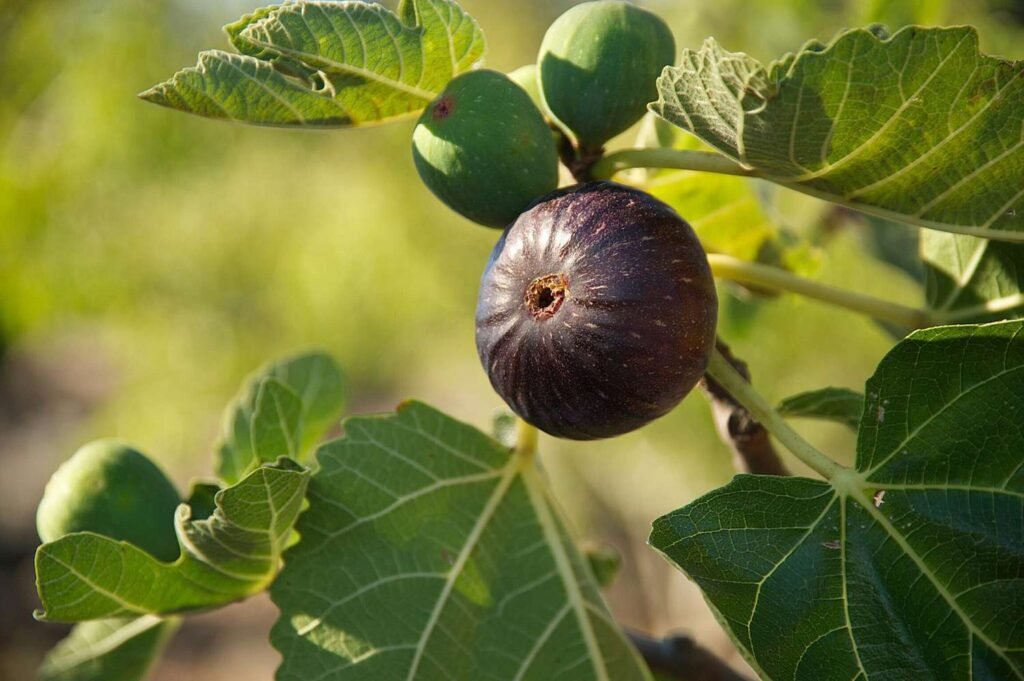
Proper planting is the foundation for healthy growth and abundant fruiting.
Site Selection
- Sunlight: Full sun for at least 6–8 hours per day is essential for sweet, ripe fruit.
- Soil: Well-draining soil is crucial to prevent root rot. Brown Turkey figs tolerate clay, loam, or sandy soil as long as drainage is adequate.
- Space: Plant at least 10 feet from other trees or structures to allow canopy expansion and airflow.
Planting Steps
- Dig a hole twice as wide as the root ball.
- Mix the soil with organic compost to improve fertility.
- Place the tree upright, keeping the root crown level with the soil surface.
- Backfill and gently firm the soil, watering thoroughly.
- Apply 2–3 inches of mulch around the base to retain moisture, keeping it away from the trunk.
Container Planting
- Suitable for patios or smaller yards. Use a large container (18–24 inches) with proper drainage.
- Move indoors or to a protected area during frost or extreme cold.
Watering Requirements
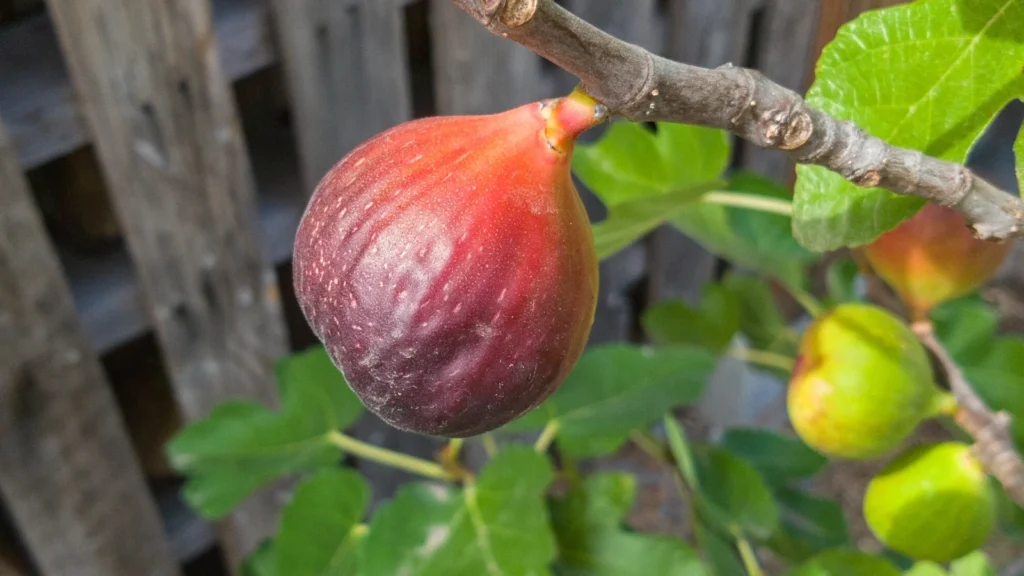
Proper watering is critical for fruit development and tree health:
- Young Trees: Water regularly to establish strong roots.
- Established Trees: Drought-tolerant but benefit from deep, infrequent watering during dry periods.
- Container Trees: Require more frequent watering due to faster drying of soil.
- Avoid waterlogged conditions to prevent root rot.
Mulching helps retain moisture, moderate soil temperature, and suppress weeds.
Fertilization and Nutrition
Brown Turkey figs are relatively light feeders but benefit from periodic fertilization:
- Use a balanced fertilizer (N-P-K 8-8-8) or a fertilizer formulated for fruit trees.
- Fertilize 2–3 times per growing season, reducing feeding in late fall and winter.
- Avoid excessive nitrogen, which promotes leafy growth at the expense of fruiting.
- Incorporate organic compost or aged manure to improve soil structure and nutrient availability.
Balanced nutrition encourages strong growth, abundant blooms, and sweet, flavorful figs.
Pruning Your Brown Turkey Fig Tree
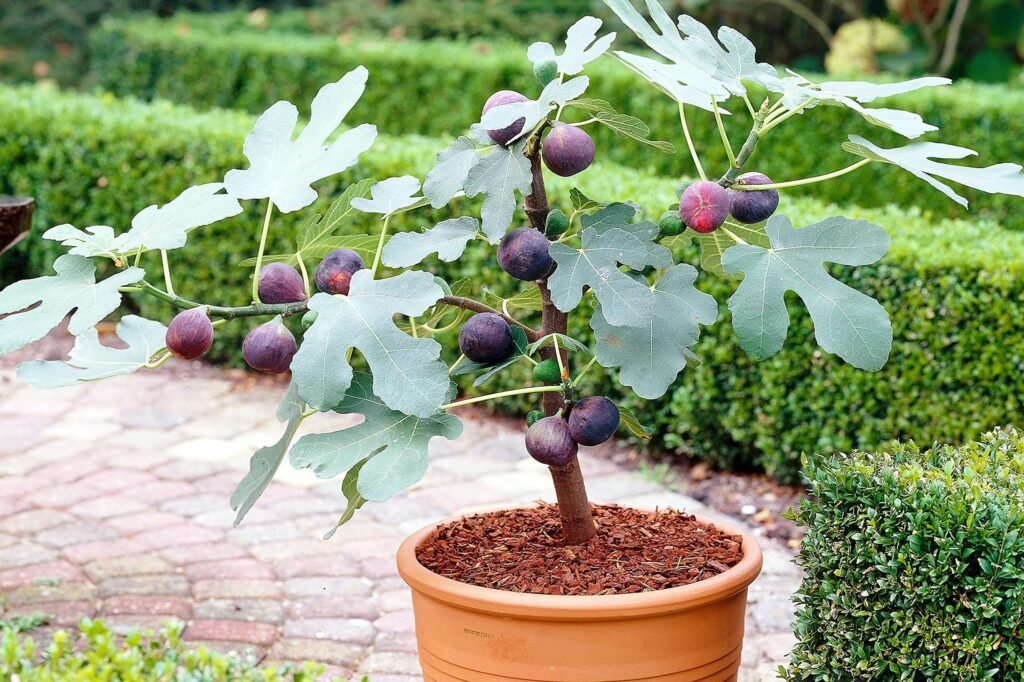
Pruning maintains tree health, size, and productivity:
- Remove dead, damaged, or crossing branches to improve airflow and sunlight penetration.
- Thin crowded branches to allow light to reach inner canopy areas, enhancing fruit quality.
- Maintain a compact shape, especially for backyard or container trees.
- Prune in late winter or early spring while the tree is dormant.
Proper pruning promotes higher yields and easier harvesting.
Flowering and Fruit Development
Brown Turkey figs produce unique flowers hidden within the fruit, so you won’t see blossoms in the conventional sense:
- Breba Crop: Figs that develop on last year’s growth, usually smaller but ripen earlier.
- Main Crop: Figs on current season’s wood, typically larger and more abundant.
- Fruit Development: Takes 2–3 months from fruit set to ripeness, depending on climate and care.
Consistent watering and proper fertilization support larger, sweeter fruit.
Pest and Disease Management
While hardy, Brown Turkey figs can encounter pests and diseases:
Common Pests
- Aphids: Feed on new growth; control with insecticidal soap or natural predators.
- Spider Mites: Cause stippling; water sprays or miticides can help.
- Fig Beetles: Attracted to ripe fruit; handpick or use traps.
Common Diseases
- Fig Rust: Yellow-brown spots on leaves; remove affected foliage.
- Root Rot: Caused by poorly drained soil; ensure proper drainage.
- Leaf Spot or Mildew: Maintain airflow and avoid overhead watering.
Regular monitoring ensures healthy trees and quality fruit.
Harvesting Brown Turkey Figs
The most exciting part of growing figs is harvesting your first ripe fruit:
Signs of Ripeness
- Color: Skin turns dark brown to purple-black.
- Softness: Slightly soft to the touch.
- Ease of Picking: Fruit detaches easily from the stem.
- Taste Test: Sweet, jammy flavor indicates peak ripeness.
Unlike many fruits, figs do not continue ripening off the tree, so careful timing is essential.
Enjoying Fresh Brown Turkey Figs
Fresh figs are incredibly versatile and delicious:
- Eating Fresh: Enjoy directly from the tree.
- Baking: Ideal for tarts, muffins, or breads.
- Preserving: Make jams, jellies, or fig preserves.
- Savory Dishes: Combine with cheeses, cured meats, or salads.
Homegrown figs are far sweeter and more flavorful than store-bought varieties, providing a unique culinary experience.
Tips for a Thriving Backyard Brown Turkey Fig Tree
- Sunlight: Ensure 6–8 hours of daily sun for optimal growth and fruiting.
- Watering: Deep, infrequent watering encourages strong roots.
- Fertilization: Apply a balanced, moderate fertilizer during the growing season.
- Pruning: Maintain canopy shape and allow sunlight to reach fruiting wood.
- Pest Monitoring: Inspect regularly to catch infestations early.
- Mulching: Retains moisture, suppresses weeds, and moderates soil temperature.
- Container Care: Move potted trees indoors during frost or extreme cold.
Following these practices ensures your Brown Turkey fig tree remains healthy, productive, and full of flavorful fruit.
Conclusion
The Brown Turkey fig tree is a backyard orchard favorite for good reason. With its sweet, jammy fruit, hardy nature, and ornamental appeal, it offers both beauty and productivity.
From planting in a sunny spot or container to careful watering, fertilization, pruning, and pest management, each step contributes to a healthy tree and abundant harvest. The joy of seeing your first ripe fig dangling from your tree is incomparable, signaling the start of years of delicious, homegrown fruit.
Whether enjoyed fresh, baked, or preserved, Brown Turkey figs provide flavor, nutrition, and satisfaction. Growing this remarkable fruit tree in your backyard is a rewarding journey that combines gardening, culinary delight, and the simple pleasure of homegrown produce.
